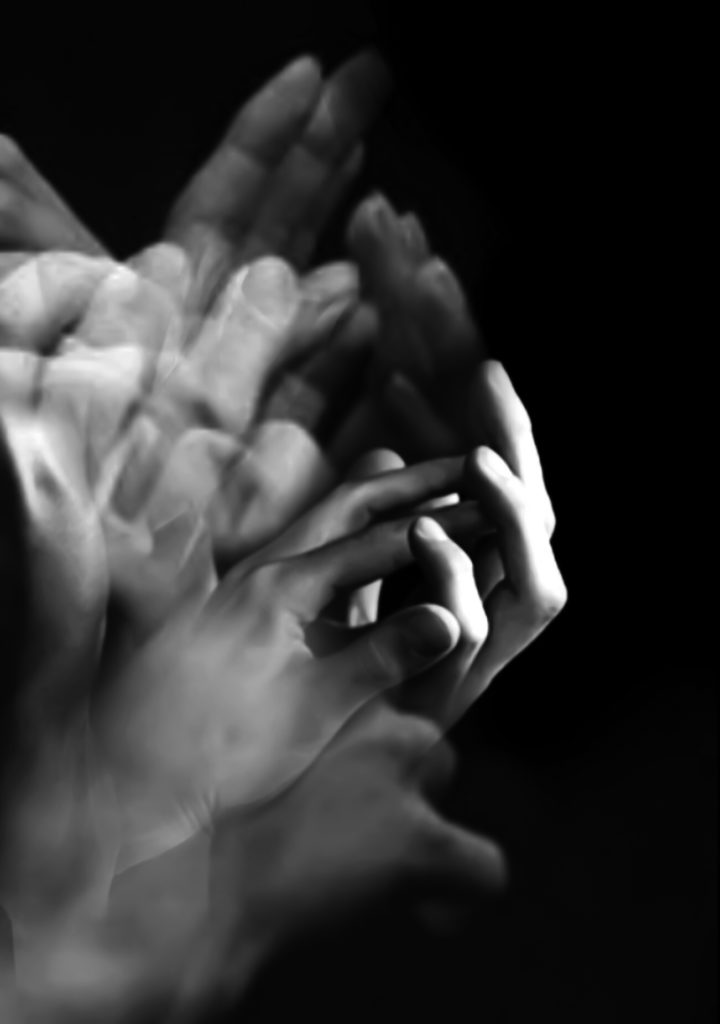“I close my mouth and speak to you in
100 silent ways.” — Rumi
Spoken language is only one of many ways humans communicate with each other. The human body has always been used to tell stories, express emotions and entertain without the use of spoken word. Mime, ballet, Bharatanatya of India, Kabuki of Japan, Corroboree of aboriginal Australia, the silent comedy of Chaplin, even the game of charades and sign language all use movement and facial expressions to communicate both universal and specific messages.
MIME
The art of mime has been celebrated, denigrated and even outlawed through history. In the 1600s, a mime was described as “a buffoon who practices gesticulations” and Greek and Roman mime performances were often vulgar farcical mimicry of events and persons.
In 1974, a photographer named Daniel S. Sorine stumbled upon two mimes in Central Park and took a few moments to photograph the duo as they quietly performed. “What attracted me … was an unusual amount of intensity, personality and physical fluidity.” Almost 35 years later, the New York-based photographer came across the negatives and realized that one of those talented fellows in the park was actually a young Robin Williams.


Photos by Daniel S. Sorine
www.sorinephoto.com
10 years later:
Robin Williams
Living with a Mime skit.
Saturday Night Live, 2/11/84
The Mime Actor must have in his head the material of a Novelist, and in his body the muscles of a Gymnast, and above all an ideal in his heart.— Etienne Decroux
THE MIME
There’s nothing scarier than an angry mime…
This 5-minute film eloquently speaks out against domestic violence. Filmed in Mexico City, with Joja Heglez as the mime.
Rowan Atkinson (Mr.Bean)
Invisible drum skit
Bharatanatyam is an ancient Hindu form of Indian classical dance. Bharatanatyam is noted for its fixed upper torso, bent legs and flexed knees combined with spectacular footwork and a sophisticated vocabulary of sign language of hands, eyes, and facial muscles to silently tell mythical legends, spiritual ideas or a religious prayer.

Christian missionaries waged an “anti-dance movement” in the late 1800s, claiming it was a front for prostitution. Hindu temple dancing was banned by the British colonial government in 1910.

A man’s face as a rule says more, and more interesting things, than his mouth, for it is a compendium of everything his mouth will ever say, in that it is the monogram of all this man’s thoughts and aspirations. —Arthur Schopenhauer (1788 – 1860) German philosopher.
Letters
Amos Russel Wells
What is a letter? A bridge in the night
From my soul to your soul; and over it go
Envoys of darkness or envoys of light.
Ladings of blessing or hurdens of woe.
What is a letter? A signal, a flash
Darting directly from your soul to mine,
Meaningless, meaningful, prudent or rash,
Always a boding or jubilant sign.
What is a letter? A flip of the pen
Paper and mucilage? That and no more?
Nay; ‘tis the fatefulest action of men,
Reaching eternity’s ultimate shore!
Burn the old letters? Alas, if you could!
Burn up indifference, malice, or hate?
Once they might burn, or he altered to good,—
Ere they were written! but now is too late.
Burn the old letters? the missives of cheer,
Glowing with merriment, pulsing with love?
Nay! though the paper disintegrates here,
They are preserved in the mansions above!
On Sunday, Sept. 7, 1884, instead of going to church with his mother, George Redeforth wrote a letter to his fiancé Nellie Stenson. He even included a tiny flower. I recently discovered the letter and set out to learn more about George and Nellie.
George was a Mississippi River ferryboat captain who lived in Warsaw, Illinois. He risked his life daily to transport the mail. Braving ice and weather, George epitomized the unofficial motto of the US Postal Service: “Neither snow nor rain nor heat nor gloom of night stays these couriers from the swift completion of their appointed rounds.”
Read the full letter and learn more about George and Nellie here on my family history website. And if you need your family history researched – give me a call! — Diana Thornton, O Muse! Editor in Chief
ALCHEMY OF ABSTRACTION

A sensitive hand touch signals closeness and shows
how strong our bonds are.
Starting from the hand with the help of their subtle gestures,
we start open communication with the other person and pass it on,
which is difficult to express in words.
Our language of sensitivity is touch –
that is hand speech,
because their warmth and power melt in our hands,
up to the tips of our fingers.
Katarzyna Szulc
Doncaster, UK
Katarzyna39szulc@gmail.com



